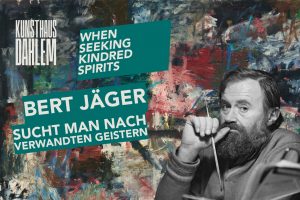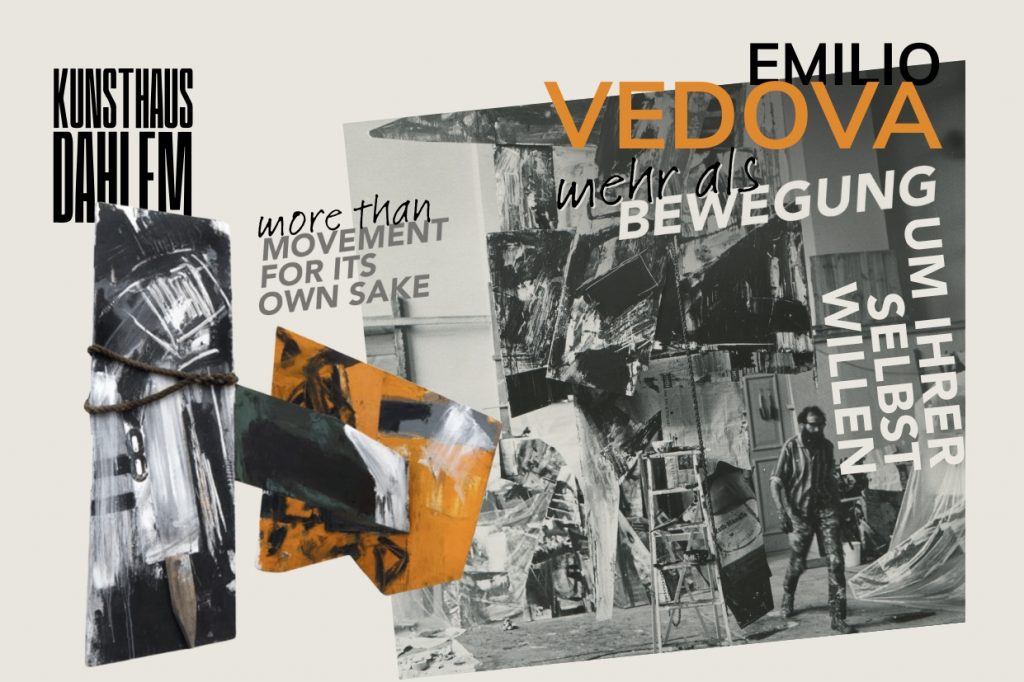21.11.2025 –
08.03.2026
Bert Jäger – When Seeking Kindred Spirits

The exhibition Bert Jäger – When Seeking Kindred Spirits presents paintings and drawings from Jäger’s early creative phase in the early 1960s, placing these works in dialogue with those of Emilio Vedova.
Curator: Philine Pahnke, Academic Trainee, Kunsthaus Dahlem
Opening: 20 November 2025 at 19:00
Dialogue with Emilio Vedova
The Freiburg painter Bert Jäger (1919–1998) devoted himself to gestural painting in the style of Informel. Emphasizing the painting process itself, he created numerous canvases and works on paper. In Jäger’s works, energetic lines and broader strokes condense into complex, multicolored webs. Layered atop one another, they become intricate structures and expressive frameworks. His dynamic and spontaneous application of paint reveals his closeness to the creative processes of Italian painter Emilio Vedova, who was regarded as a leading figure for many Informel artists in Germany.
Artistic Development
Jäger studied painting at the Karlsruhe Academy of Fine Arts from 1934 to 1939. Immediately after graduation, he was drafted into the Wehrmacht and was taken prisoner of war by the Soviets in 1944. After his release, he returned to Freiburg, working as a press photographer while also pursuing independent black-and-white photography. In 1960, Jäger turned to gestural painting. Yet his ability to execute the sweeping movements characteristic of Informel was always somewhat limited: a war injury restricted him physically throughout his life.
After several years of successful work in the Informel style, Jäger’s artistic expression underwent a marked transformation in the second half of the 1960s. At the same time, his deteriorating health increasingly affected his creative practice – by around 1970, he was forced to give up painting altogether. It was only 17 years later, when Jäger once again encountered his own works in the context of an exhibition, that he began drawing again. This led him back fully to painting, and in the late 1980s and 1990s he experienced a productive second creative period, continuing the trajectory of his earlier work.
SUPPORT
Irina and Helmut Laaff
